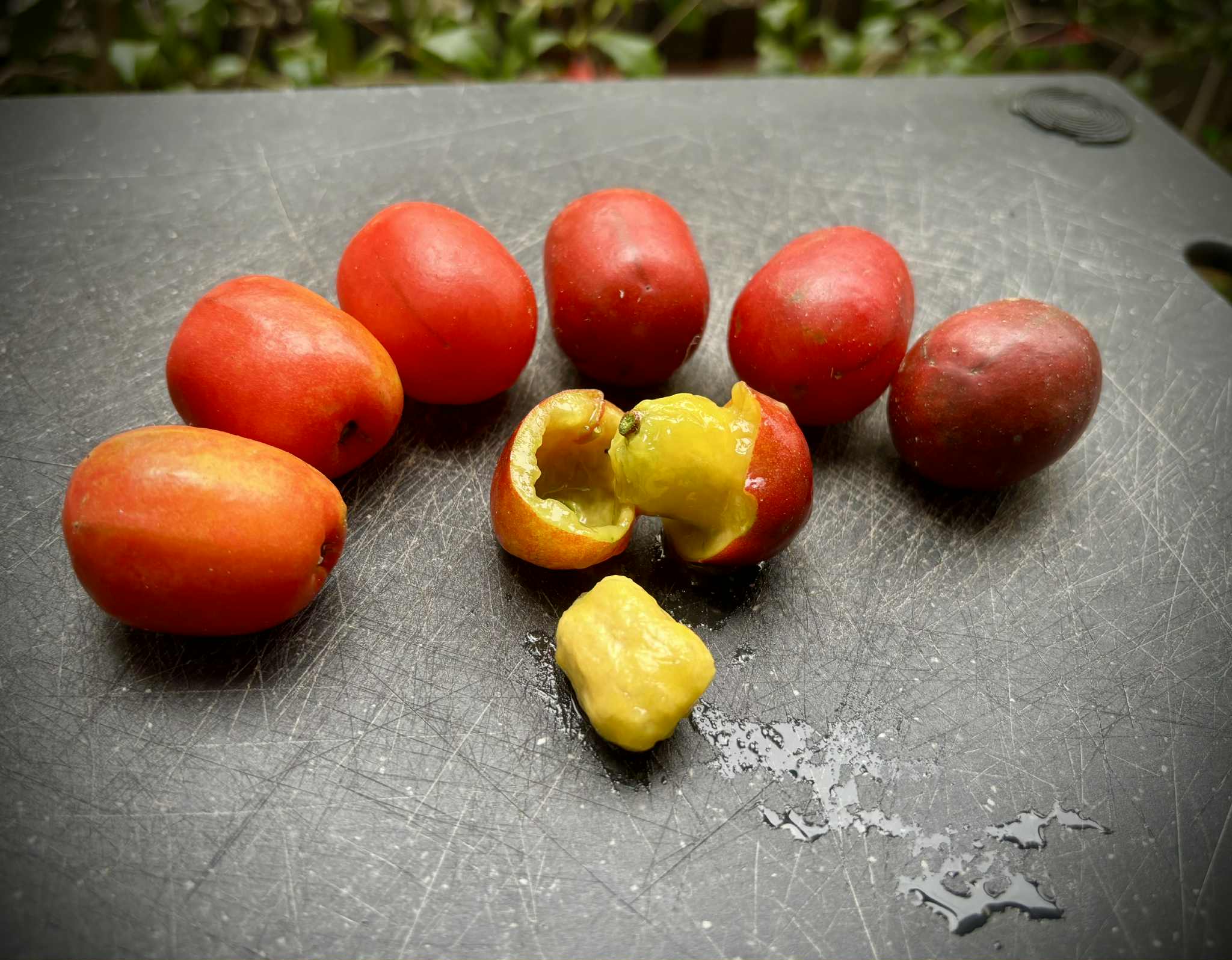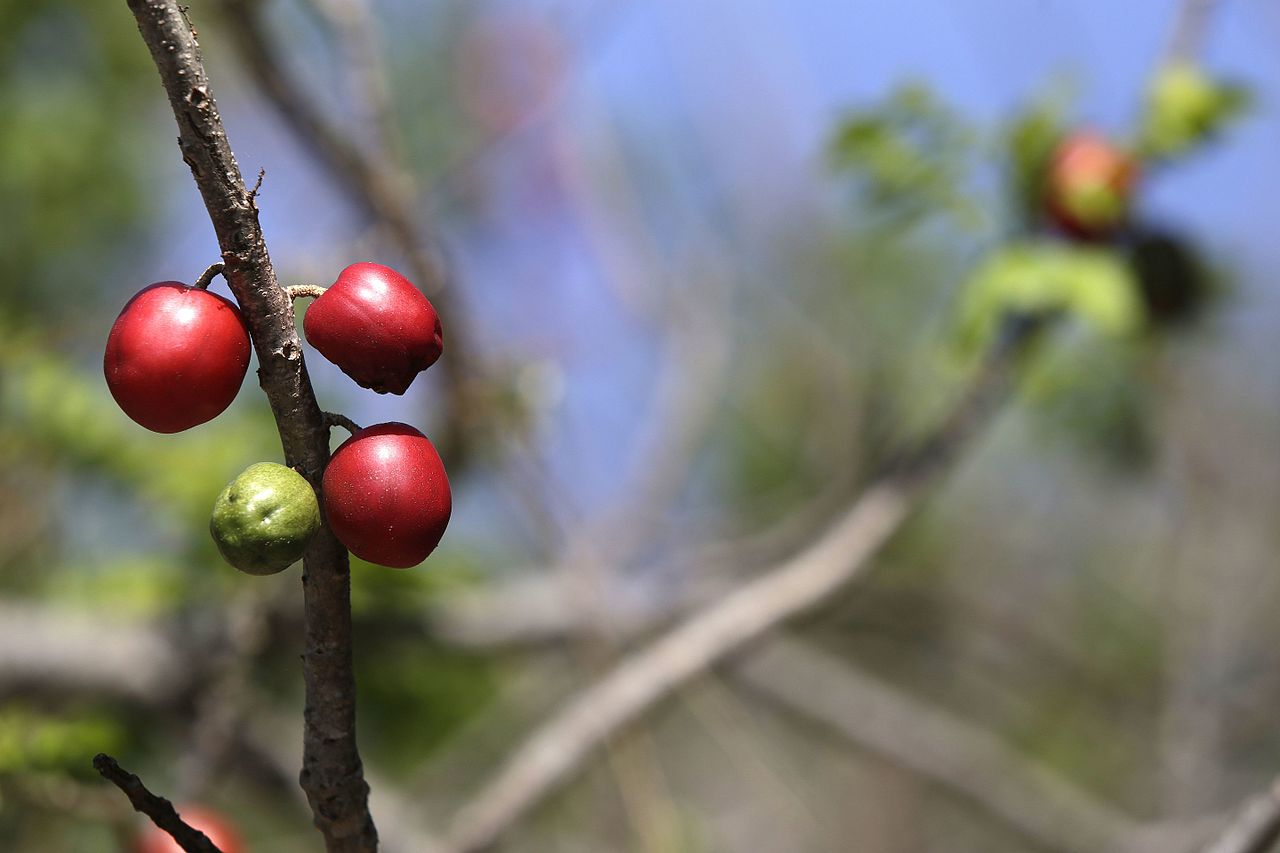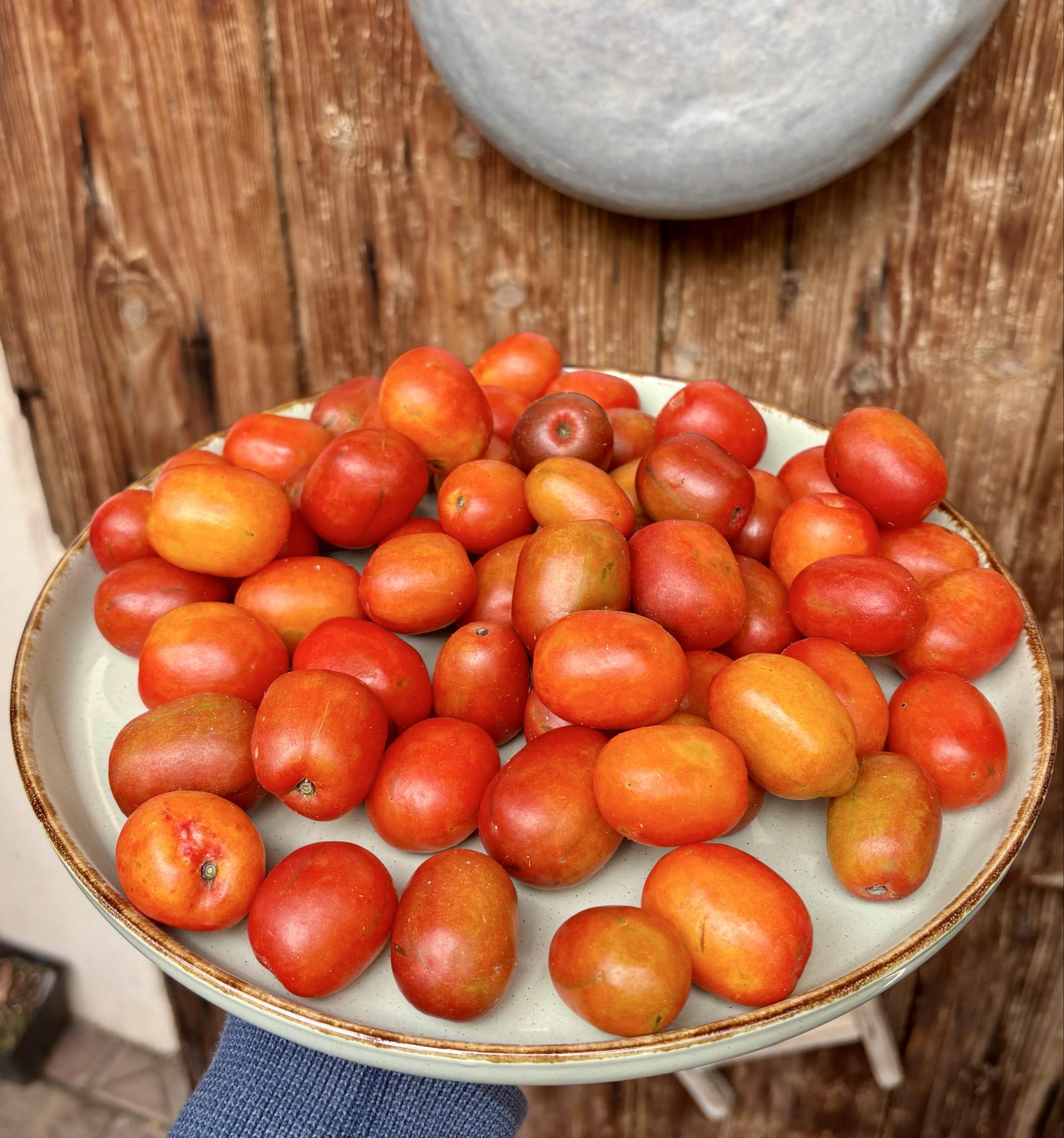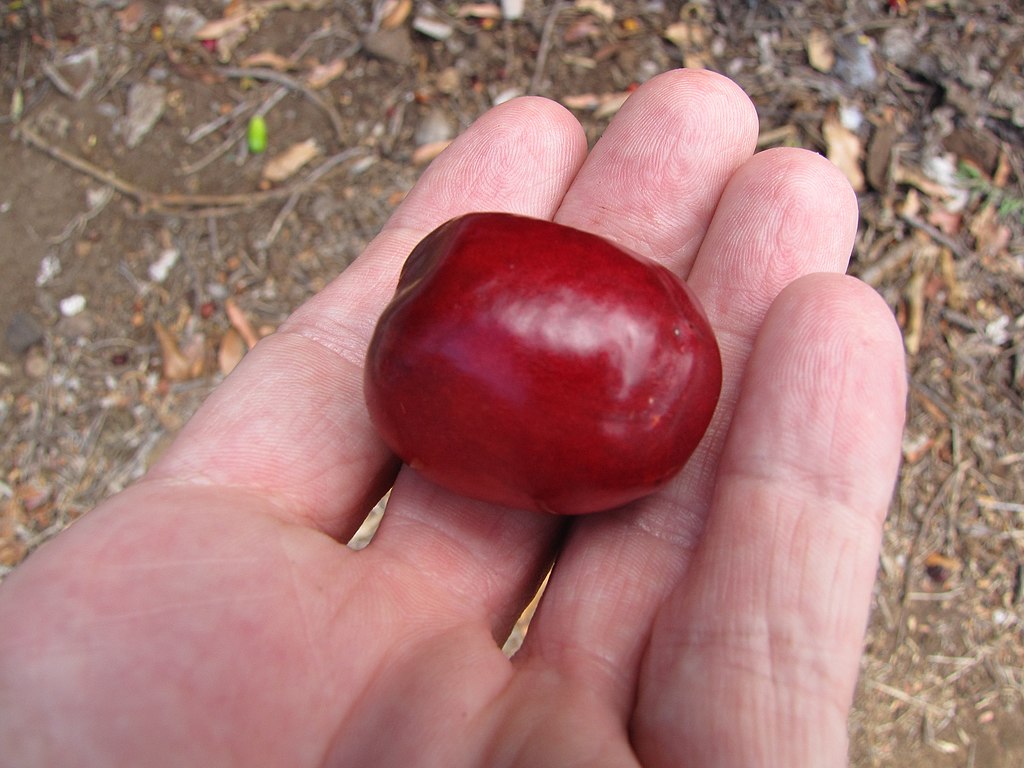Ciruela (Spondias purpurea) - 1 fresh seed / 1 frischer Samen
Ciruela (Spondias purpurea)
Family / Familie: Anacardiaceae
origin from / Herkunft: South America / Südamerika
Climate / Klima: temperate to warm (10-30C / 50-80F) / gemäßigt bis warm (10-3C / 50-80F)
Use / Verwendung: edible fruits, juice, jam, ice cream, etc. / essbare Früchte, Säfte, Marmelade, Eis usw.
you buy / sie kaufen: 1 fresh seed / 1 frischer Samen
Delivery worldwide
The Ciruela tree originates from South America.
There it has many different names, such as:
Chiabal, Zirguelo, Ciruela, Ciruela Agria, Ismoyo, Jobillo, Jobito, Jobo, Jocote, Jocotillo, Pitarillo, Sineguela, Sismoyo, Ambu; Ambuzeiro, Imbu.
In lowland areas, this plant grows as a tree, and in highland areas, it also grows as a tree.
During the short dry season, the leaves are shed and replaced by new ones.
The red fruits are suitable for eating raw and taste like a mixture of plum, mango, and nectarine.
In South America, many other products are also made from the fruits.
From wine to jam and sweets.
The fruits contain a large seed, which in turn contains up to 5 small, individual seeds, but usually 2 to 3.
This tree is now cultivated in many parts of the world, including Asia.
The tree is dioecious (having separate male and female plants), but it can also produce hermaphroditic flowers.
Propagation from cuttings is very easy. Even thick branches root easily (similar to the European willow).
This plant tolerates many types of soil and can be grown very well in containers.
Waterlogging should be avoided with this species, and older plants are quite drought-resistant.
Please overwinter this plant at a minimum temperature of 10 degrees Celsius.
Die Ciruela stammt ursprünglisch aus Südamerika.
Dort hat sie viele verschiedene Namen wie zum Beispiel:
Chiabal, Zirguelo, Ciruela, Ciruela Agria, Ismoyo, Jobillo, Jobito, Jobo, Jocote, Jocotillo, Pitarillo, Sineguela, Sismoyo, Ambu; Ambuzeiro, Imbu.
In Tieflandgebieten wächst diese Pflanze als Baum und in Hochlandgebieten als Baum.
Während der kurzen Trockenzeit werden die Blätter abgeworfen und durch neue ersetzt.
Die roten Früchte sind gut zum Rohverzehr geeignet und schmecken wie eine Mischung aus Pflaume, Mango und Nektarine.
In Südamerika werden aus den Früchten auch viele weitere Produkte hergestellt.
Von Wein bis Marmelade und Süßigkeiten.
Die Früchte besitzen einen großen Samen, indem sich wiederum bis zu 5 kleine, einzelne Samen befinden. Meistens jedoch 2 bis 3 Stück.
Mittlerweile wird dieser Baum in vielen Orten der Welt angebaut - so auch in Asien.
Der Baum ist zweihäusig getrenntgeschlechtig, kann aber auch zwittrige Blüten bilden.
Die Vermehrung über Stecklinge ist sehr einfach. Hier wurzeln sogar dicke Äste einfach (ähnlich der europäischen Weide).
Diese Pflanze kommt mit vielen Arten von Erde zurecht und kann sehr gut in Kübeln angebaut werden.
Staunässe ist bei dieser Art zu vermeiden und ältere Pflanzen sind gut trockenresistent.
Bitte diese Pflanze bei mindestens 10 Grad überwintern.




